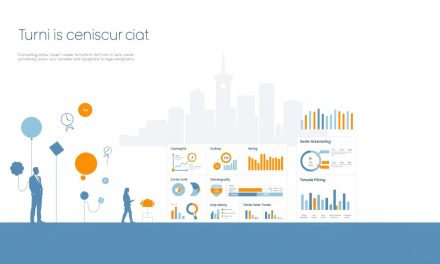Remember that first rush of excitement when you decided to work for yourself? The freedom to choose projects, set your hours, and finally own your success? But somewhere between chasing clients and managing deadlines, that initial spark can fade. What if you could reignite it—and build a career that thrives long-term?
Independent professionals today face a unique challenge: standing out in a crowded digital world. Studies from Adobe reveal that 83% of top-earning freelancers prioritize two things: a polished online portfolio and strategic use of platforms like LinkedIn or Instagram. It’s not just about talent—it’s about visibility.
This guide merges hard-won industry insights with practical steps. Learn how to craft a client-attracting profile, leverage social media algorithms, and network in ways that create lasting partnerships. Forbes notes that professionals who invest in these areas see 2x faster income growth compared to those relying solely on traditional methods.
Table of Contents
Key Takeaways
- Autonomy and higher earning potential define modern independent careers
- Building a professional portfolio increases credibility and client trust
- Social media optimization expands reach beyond local markets
- Strategic networking leads to repeat collaborations and referrals
- Actionable frameworks help both new and established professionals scale efficiently
Understanding the Freelance Landscape
The world of independent work offers both unmatched freedom and complex hurdles. While 46% of professionals now choose project-based careers (LinkedIn 2023), success requires navigating a market where opportunity and competition collide.
Where Opportunity Meets Autonomy
Creative professionals thrive in environments where they control schedules, client choices, and project direction. A graphic designer in Lyon, for instance, can collaborate with Australian startups while managing family commitments. This flexibility often leads to 35% higher income potential compared to traditional roles, according to Upwork case studies.
Navigating Hidden Roadblocks
Market saturation remains a pressing concern. « When 3,000 profiles offer similar services, standing out becomes your first job, » notes Clara Dubois, founder of Paris-based creative collective L’Atelier. Many struggle with:
- Predictable income streams
- Client acquisition costs
- Algorithm-driven platforms favoring established accounts
Strategic use of digital marketing tools helps overcome these barriers. Targeted social campaigns and SEO-optimized portfolios allow independents to grow business reach without overspending. As Dubois advises:
« Invest 20% of your week in visibility efforts. It transforms feast-or-famine cycles into steady workflows. »
To make sure your efforts yield results, track metrics like client retention rates and proposal conversion times. Pair data insights with authentic storytelling—clients connect with why you work, not just what you deliver.
Defining Your Unique Value in the Freelance Market
In a digital marketplace where talent is abundant, clarity about your distinct offerings becomes your greatest asset. Standing out requires more than listing services—it demands showcasing how your expertise solves specific client challenges. Start by asking: « What outcomes do I consistently deliver that others can’t? »
Identifying Your Core Skills and Expertise
Begin with a self-audit. Track projects where you exceeded expectations or received glowing client feedback. These patterns reveal your natural strengths. For instance, Marseille-based illustrator Léa Martin discovered her niche in medical visualization after analyzing recurring requests from healthcare clients.
Use these methods to pinpoint your value:
| Method | Purpose | Outcome |
|---|---|---|
| SWOT Analysis | Identify competitive advantages | Clear differentiation points |
| Skill Audit Spreadsheet | Quantify expertise levels | Service tier development |
| Client Feedback Review | Validate perceived strengths | Data-backed positioning |
Paris UX designer Marc Toussaint doubled his project requests after restructuring his portfolio around three verified strengths: rapid prototyping, accessibility compliance, and cross-cultural design. Tools like SkillScan or 360Feedback provide structured frameworks for this analysis.
Remember: Your unique value isn’t static. Revisit assessments quarterly. Track emerging industry needs through platforms like Malt or Crème de la Crème. As client demands evolve, so should your positioning strategy.
Freelance Business Growth: Essential Strategies
Your digital footprint acts as a 24/7 ambassador, opening doors while you focus on delivering exceptional work. A recent HubSpot study found professionals with optimized portfolios secure 47% more inbound inquiries than those relying solely on third-party platforms.
Crafting a Client-Centric Portfolio
Start by selecting platforms that align with your skills and audience. WordPress remains a top choice for its customization options, but newer tools like Adobe Portfolio offer built-in SEO features. Prioritize projects demonstrating measurable outcomes—clients care about results, not just aesthetics.
| Step | Tool | Impact |
|---|---|---|
| Project Curation | Behance Collections | Showcases expertise depth |
| Case Study Development | Canva Templates | Increases conversion by 68% |
| SEO Optimization | Yoast Plugin | Boosts organic visibility |
Strategic Platform Engagement
Social channels serve as dynamic extensions of your portfolio. LinkedIn’s algorithm favors posts combining services explanations with behind-the-scenes insights. For visual fields, Instagram Reels demonstrating workflow techniques gain 3x more saves than static posts.
Allocate specific time blocks for content creation using tools like Later or Buffer. As digital marketing expert Élodie Renard advises:
« Treat your social profiles as living portfolios—update them weekly with client wins and skill upgrades. »
Balancing project work with promotion becomes easier using the 70/30 rule: spend 70% of active hours on client deliverables, 30% on visibility efforts. Those ready to start your journey will find detailed frameworks for maintaining this equilibrium.
Building a Strong Brand Identity
In a sea of similar service providers, your brand acts as a lighthouse guiding clients to your expertise. A cohesive visual and verbal identity doesn’t just look polished—it signals reliability and project management professionalism at every touchpoint.
Creating Consistent Visuals and Messaging
Start by designing a signature color palette and typography that reflects your work’s essence. Tools like Adobe Color or Canva help maintain visual harmony across proposals, social posts, and websites. For example, Toulouse-based web developer Amélie Bernard increased client retention by 40% after unifying her brand’s blues and grays to convey tech sophistication.
Messaging consistency matters equally. Develop a communication style guide outlining your tone, key phrases, and response protocols. Marketing strategist Luc Girard emphasizes:
« Clients remember how you make them feel. Align every email, caption, and proposal to your core values. »
Practical steps to sustain brand alignment:
- Use project management tools like Notion or Trello to store brand assets
- Schedule monthly audits of your online presence
- Create email templates with pre-approved messaging
Lyon copywriter Élise Moreau transformed her success rate by rebranding from generic « content services » to specializing in eco-tourism storytelling. Her redesigned portfolio now features earth-toned visuals and client testimonials highlighting niche expertise—resulting in 3x more referrals.
Networking Tactics for Freelancers
Connections fuel opportunity in the world of independent work. Building relationships bridges gaps between your expertise and clients needing solutions. A study by BPI France reveals professionals who network strategically secure 63% more recurring projects than those relying on cold outreach alone.
In-Person and Digital Networking Tips
Local industry events remain goldmines for meaningful connections. Attend meetups hosted by organizations like Réseau Entreprendre or Paris Pionnières. Bring business cards tailored to your niche—for example, a Lyon-based developer might highlight app prototyping skills. Always follow up within 48 hours via LinkedIn with personalized references to conversations.
Digital platforms amplify your reach exponentially. Engage in LinkedIn groups like « Freelancers France » by sharing actionable insights. Twitter Spaces discussing industry trends position you as a thought leader. Marseille copywriter Sophie Leroux landed six clients through a single thread explaining SEO writing frameworks.
| Approach | Platform/Tool | Benefit |
|---|---|---|
| Local Meetups | Eventbrite | Builds regional credibility |
| Skill Demonstrations | LinkedIn Live | Showcases expertise visually |
| Community Participation | Slack groups | Generates peer referrals |
Media exposure through guest blogging or podcast interviews creates third-party validation. Toulouse designer Marc Bernard doubled inquiries after appearing on « Les Entrepreneurs » YouTube series. Combine these efforts with consistent client check-ins—satisfied customers often become your strongest advocates.
Generating Word-of-Mouth and Client Trust

What’s more convincing than a satisfied client singing your praises? Word-of-mouth referrals drive 89% of new collaborations for established professionals, according to Nielsen research. This organic growth method builds credibility faster than paid ads—when done right.
Start by systematically gathering testimonials. After project completion, send a brief survey asking clients to highlight specific outcomes. For example:
- “How did our work impact your service quality?”
- “Which aspect of the design process exceeded expectations?”
Convert standout responses into case studies. Marseille-based developer Théo Lambert shares:
« Including metrics like ‘30% faster loading times’ in case studies tripled my referral rate. »
Showcase this social proof strategically. Dedicate a website section to client stories, and embed quotes in service descriptions. On social media, pair testimonials with project visuals—LinkedIn posts combining both receive 72% more engagement.
| Platform | Best Use | Impact |
|---|---|---|
| Website Homepage | Trust-building entry point | +55% conversion lift |
| Instagram Highlights | Visual credibility | 3x profile visits |
| Email Signatures | Subtle reinforcement | 27% repeat inquiries |
Your design choices amplify trust signals. Clean layouts with consistent branding make your website feel professional. Bordeaux copywriter Camille Roux increased bookings by 40% after simplifying her portfolio’s navigation and using client-approved color psychology.
Maintain relationships through regular check-ins. Share industry updates relevant to past projects, or celebrate client milestones. As highlighted in this client relationship guide, understanding their evolving needs is the best way to secure repeat work and referrals.
Mastering Digital Marketing for Freelancers
Your expertise deserves an audience that actively seeks what you offer. Digital channels provide unparalleled reach—when approached with precision. A HubSpot study shows professionals using integrated marketing strategies see 53% higher client retention compared to passive outreach.
Content Marketing and SEO Best Practices
Regularly publishing actionable insights positions you as a trusted authority. For example, Lyon-based copywriter Jeanne Lefèvre tripled website traffic by:
- Writing biweekly blogs on niche SEO trends
- Optimizing headers with location-specific keywords (e.g., « Paris-based UX designer »)
- Embedding client success stories in service pages
Tools like SurferSEO or Clearscope help analyze competitors’ content gaps. Focus on long-tail phrases like « step-by-step branding guide for architects »—they attract 40% more qualified leads according to Ahrefs data.
Using Automation Tools to Streamline Promotion
Strategic tools reclaim hours spent on repetitive tasks. Marseille photographer Lucas Bernard schedules social posts via Buffer while using Propoze to auto-send project proposals. His workflow improved by 6 hours weekly.
| Tool Type | Example | Impact |
|---|---|---|
| Email Marketing | Mailchimp | 35% faster campaign launches |
| Social Management | Hootsuite | 2x engagement with optimal timing |
| SEO Analysis | SEMrush | Identify 200+ keyword opportunities |
« Automation isn’t about replacing creativity—it’s about protecting it, » notes digital strategist Émilie Rousseau.
Start with one platform. Master its features, then expand. Track metrics like click-through rates monthly to refine your strategy.
Scaling Your Freelance Business with Smart Tools
Imagine reclaiming hours lost to administrative tasks while boosting service quality. Modern professionals achieve this through strategic automation. AI-powered software now handles invoicing, client onboarding, and progress tracking—freeing you to focus on high-value work.
Smart Automation for Daily Tasks
Platforms like Propoze transform proposal creation. Instead of drafting from scratch, customize pre-built templates with your rates and timelines. Marseille-based developer Anaïs Leroux reduced proposal time by 70% using this approach. Other time-savers include:
- AI chatbots answering common client queries
- Calendar sync tools automating meeting scheduling
- Expense trackers categorizing tax-deductible costs
Streamlined Communication Systems
Centralized platforms prevent missed messages across emails and apps. Trello boards with client access portals keep everyone updated. Paris designer Paul Mercier cut project revision rounds by half using this method.
| Tool Type | Example | Efficiency Gain |
|---|---|---|
| Project Management | Asana | 45% faster deadlines |
| CRM Software | HubSpot | 2x lead conversion |
| Document Automation | Docusign | 80% less paperwork |
Sales processes benefit from automated follow-ups. Tools like Mailchimp send personalized check-ins post-delivery. As highlighted in this analysis of AI’s impact, these systems help maintain client relationships during busy periods.
Regularly audit your toolkit. Test new solutions quarterly—many agency-grade tools now offer affordable solo plans. Bordeaux marketer Léa Dubois updates her tech stack every six months, consistently achieving 20% annual efficiency gains.
Setting Goals and Evaluating Key Performance Indicators

Clear objectives transform potential into measurable progress. For independent professionals, structured goal-setting bridges the gap between daily tasks and long-term aspirations. Without defined targets, earning potential remains untapped, and operational freedom stays out of reach.
Using the SMART Framework for Goal-Setting
The SMART method turns vague ambitions into actionable plans. Let’s break it down:
- Specific: « Increase monthly income by 20% through upselling existing clients » beats « Make more money. »
- Measurable: Track project completion rates or client satisfaction scores weekly.
- Achievable: Aim for 3 new clients quarterly if your current capacity allows.
- Relevant: Align goals with your vision—like freeing up 10 hours monthly for creative work.
- Time-bound: Set deadlines: « Launch a premium service tier by Q3. »
Marseille-based developer Camille Vidal doubled her income in six months using this approach. She tracked progress through:
| KPI | Measurement Method | Target Example |
|---|---|---|
| Income Growth | Monthly revenue reports | +15% per quarter |
| Client Retention | Repeat project rate | 60% retention |
| Efficiency | Hours per project (Toggl) | Reduce by 25% |
Regularly review these metrics. Adjust strategies if progress stalls—maybe refine your pitch or streamline workflows. As Lyon designer Antoine Leroux notes:
« Tracking time saved per project showed me where to automate, giving back 8 hours weekly for family. »
Effective goal-setting creates multiple ways to thrive. Whether aiming for financial stability or flexible schedules, SMART frameworks turn aspirations into tangible results. Businesses built on these principles adapt faster to market shifts while maintaining personal freedom.
Expanding Your Service Offerings and Raising Rates
Scaling your practice requires more than skill—it demands strategic evolution of what you offer. Professionals who diversify their services see 58% higher annual revenue compared to those sticking to single offerings, according to a 2023 FlexJobs survey. This approach future-proofs your practice against market shifts while creating new value for clients.
Diversifying Income Streams and Upselling
Start by identifying gaps in your current offerings. Ask: « What related needs do clients mention during projects? » A Lyon-based developer doubled her income by adding technical training sessions for non-tech teams—a natural extension of her coding work.
Effective expansion follows three steps:
| Method | Tools | Outcome |
|---|---|---|
| Client Feedback Analysis | Typeform Surveys | Pinpoints unmet needs |
| Competitor Gap Study | Ahrefs Content Explorer | Reveals underserved industries |
| Bundled Package Design | Canva Proposal Templates | Increases average project value |
Upselling works best when presenting clear benefits. Offer tiered pricing with premium options like expedited delivery or post-project support. Toulouse copywriter Marie Dupont increased rates by 40% after bundling SEO audits with her writing packages.
Today’s competitive market rewards those who strategically place themselves as multi-solution experts. Start by auditing one client project this week—note where additional services could have enhanced results. Immediate benefits include higher client retention and smoother income streams across industries.
Overcoming Challenges and Preventing Burnout
Juggling deadlines and personal life often feels like walking a tightrope. Many professionals face overwhelming workloads, leading to exhaustion that impacts both output quality and well-being. Recognizing these pressures early creates space for sustainable solutions.
Practical Frameworks for Sustainable Workflows
Start by auditing your weekly tasks. Identify energy-draining activities—like excessive client calls or manual invoicing—that others could handle. Automation tools like Todoist or Toggl Track help reclaim hours while maintaining consistency.
Top strategies used by successful professionals:
- Time blocking: Schedule creative work during peak focus hours
- Delegation systems: Outsource non-core tasks to virtual assistants
- Boundary setting: Use calendar markers for uninterrupted personal time
| Technique | Tool Example | Impact |
|---|---|---|
| Priority Matrix | Eisenhower App | Reduces decision fatigue by 40% |
| Task Batching | Focus@Will | Boosts output speed by 25% |
| Energy Tracking | RescueTime | Identifies 3+ weekly burnout triggers |
Regular breaks prove vital. The Pomodoro Technique—25-minute focused intervals followed by 5-minute pauses—helps maintain mental clarity. As Marseille-based designer Lucie Marchand notes:
« Protecting two weekend days transformed my creativity. Clients respect boundaries when you model them clearly. »
Implementing these methods not only preserves energy but elevates service quality. For deeper insights on maintaining equilibrium, explore work-life balance strategies tailored for modern professionals.
Conclusion
Building a sustainable practice hinges on deliberate action and continuous refinement. The strategies outlined—from crafting a standout brand to optimizing digital outreach—create a model designed for lasting impact. Regular self-assessment ensures alignment with market shifts, while adaptive learning turns challenges into stepping stones.
By integrating these approaches, you position yourself to manage costs efficiently while scaling your operations. Tools like targeted networking and automated systems aren’t just time-savers—they’re growth accelerators. Success lies in balancing creativity with structured processes.
Take the first step today. Implement one strategy from this guide, measure its effect, then expand. The freedom to shape your career path—and the potential it unlocks—is within reach. Your journey isn’t about perfection. It’s about progress that compounds.
FAQ
How do I stand out in competitive freelance markets?
Focus on niche specialization and showcase your expertise through case studies on platforms like LinkedIn or Behance. Tools like Canva or Adobe Portfolio help create polished visuals, while client testimonials build credibility in your industry.
What digital marketing strategies work best for service providers?
Combine SEO-optimized content (using SEMrush or Ahrefs) with targeted social media campaigns on Instagram or Twitter. Automation tools like Buffer or Hootsuite streamline posting, while email newsletters via Mailchimp keep clients engaged.
How can I manage multiple projects without burnout?
Implement time-tracking software like Toggl and project management systems such as Asana. The SMART goal framework helps prioritize tasks, while setting clear boundaries with clients through tools like Calendly prevents overcommitment.
What’s the most effective way to raise rates without losing clients?
Gradually increase pricing while adding measurable value – bundle services using platforms like Dubsado or propose retainer agreements. Transparent communication about enhanced offerings (like faster turnaround times) justifies adjustments.
Which tools help optimize client communication?
Use Loom for video updates, Slack for real-time messaging, and Notion for shared project tracking. Proposal software like HoneyBook adds professionalism, while payment systems such as Stripe ensure smooth transactions.
How do I transition from single projects to recurring revenue?
Develop tiered service packages and subscription models using platforms like Patreon. Upsell maintenance plans or coaching sessions through personalized outreach campaigns tracked via CRM tools like HubSpot.





